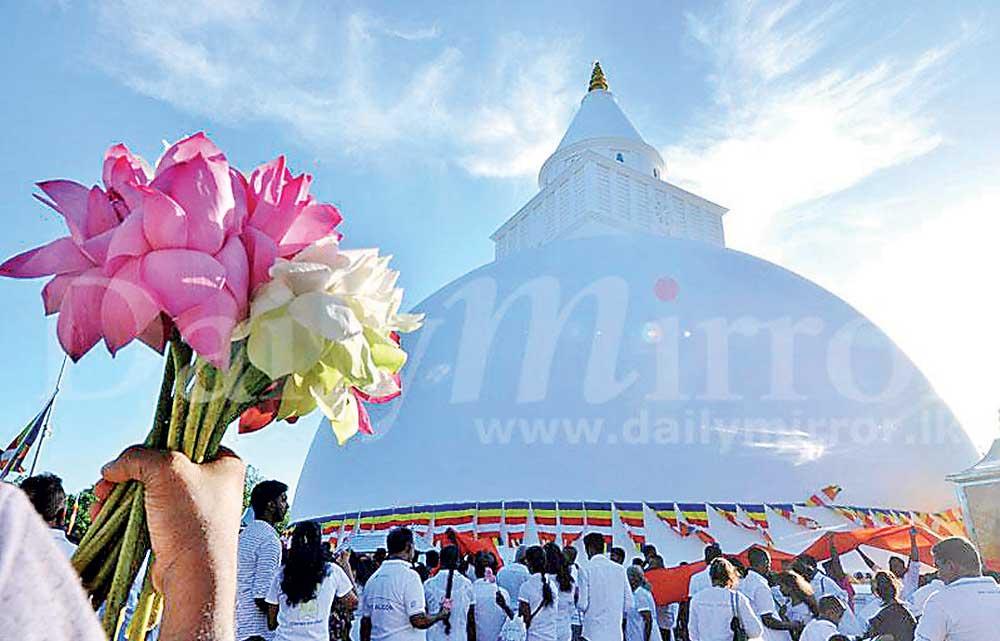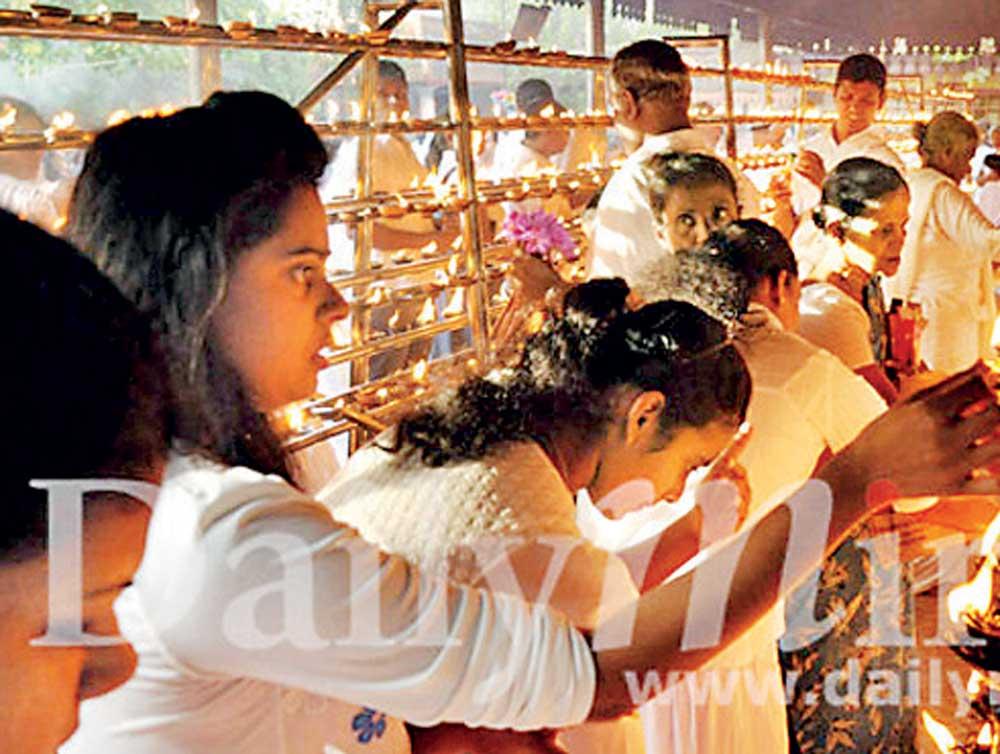Reply To:
Name - Reply Comment

Seeking compassion on Esala Poya

Lighting lamps for blessings
 The significant ‘Esala Maha Poya’ falls in the month of July. Beginning from the month of January, 12 monthly full moon days are named as: Duruthu, Nawam, Medin, Bak, Vesak, Poson, Esala, Nikini, Binara, Vap, Ile, and Unduwap respectively. Buddhist devotees signify ‘Esala Maha Poya’, almost in per ‘Vesak’ and ‘Poson’ due to its multifaceted values.
The significant ‘Esala Maha Poya’ falls in the month of July. Beginning from the month of January, 12 monthly full moon days are named as: Duruthu, Nawam, Medin, Bak, Vesak, Poson, Esala, Nikini, Binara, Vap, Ile, and Unduwap respectively. Buddhist devotees signify ‘Esala Maha Poya’, almost in per ‘Vesak’ and ‘Poson’ due to its multifaceted values.
Firstly, on an Esala Poya upon the pleading of Maha Brahmma and the host of Thusita world deities, The Buddha was conceived and born as prince Siddhartha, to parents Queen Mahamaya and King Suddhodana of Kapilawattupura.
Later, on another Poya (full moon day) Prince Siddhartha, now aged 29, unheeded the Crown and his father, the Royal Highness. The Prince became a penniless wonderer in search of ‘The Sublime Truth’, searching for deliverance and purification via the realising of the vagueness of life’s ills and the suffering of all beings.
Six years later, most consequently on a radiant Esala Poya day, the Tathagata, Gautama Buddha, delivered his maiden sermon “The Dhamma Cakka Pavattana Suttum”, (Revelation of the Wheel of Truth), to his first five disciple at Migadhaya. Having listened to the sermon, the highest Ascetic Kondanna, attained “Sotapanna State” of mind, (The unshakable final stage of a Sainthood, Nibbana).
The glorious cry and praise of thousands of deities gathered around amplifying the message from world to world. This historical reference is the first ever revealing of the presence of the outer worlds.
On a similar Poya day, in order to tame the snobbish hearts, The Buddha radiated super natural powers ‘Yama maha Pelahera’ at the Gantabya Bunyan Yard.
On another related Esala Poya day, The Buddha revisited the Thusitha Realm, his previous birth realm, to uplift the then mothers (Matu Divyarajas) meritorious status by solemnising “Abhidhamma”.
During King Kitsirimewans time, the historic ‘Esala Perehera’ commenced with the first exposition of ‘The Sacred Tooth Relic of The Buddha’. The sacred Alms Bowel of The Buddha was also brought to Sri Lanka.
King Devanum Piyatissa then established 68 caves for 62 Arahants to spend the ‘Retreat Seasons’ (the monsoon seasons) around the Kantaka Chaithya, at the same time Prince Arietta and 56 Sri Lankans received higher ordination.
In 164 B.C., King Dutugemunu ceremonially laid the foundation stone to build the magnificent Ruwanweli Maha Seya and enshrined sacred Buddha Relics.
Gautama Buddha, by his own experience, realised the futility of resorting to indulgence in two extreme ways of life. Over indulgence in worldly pleasures on one hand or self-mortification on the other hand was admonished; accordingly, what the Buddha lauded was the Middle Path, or the Eightfold Nobel Path, in order to realise and acquire the Four Nobel Truths. The Eightfold Nobel Path is required for protect and must be practiced with Morality (Sila), Tranquillity (Samadhi), and Wisdom (Panna).
Ultimately it’s Samadhi that’s a vital factor to condition and ‘Citta Visuddhi’, the purification of mind, to attain the sublime goal of Nibbana. All sentient beings can be happy and peaceful by observing Sil (a list of precepts that are observed by lay Buddhists on Poya day).
[email protected]